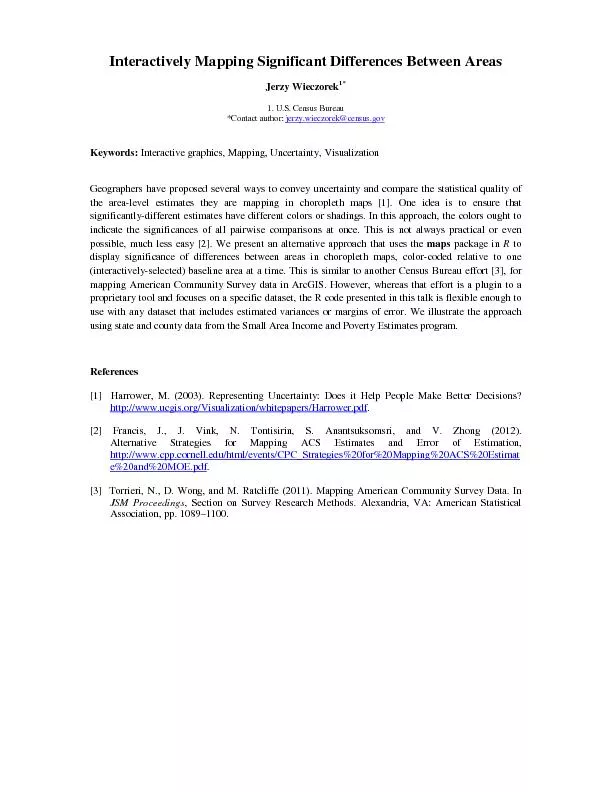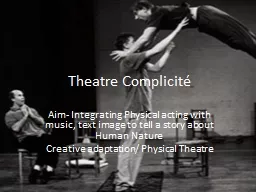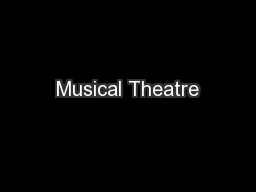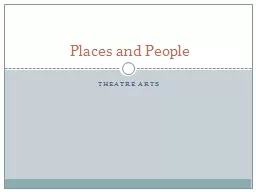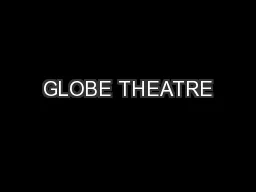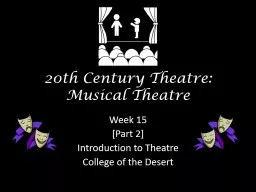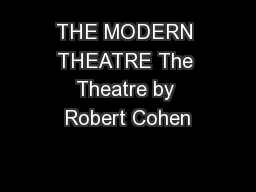PPT-Jerzy Grotowski Poor Theatre
Author : test | Published Date : 2019-06-22
Environmental Theatre Grotowskis theories and the works he staged with the Polish Laboratory Theatre from its founding in 1959 until 1970 presented the guiding principles
Presentation Embed Code
Download Presentation
Download Presentation The PPT/PDF document "Jerzy Grotowski Poor Theatre" is the property of its rightful owner. Permission is granted to download and print the materials on this website for personal, non-commercial use only, and to display it on your personal computer provided you do not modify the materials and that you retain all copyright notices contained in the materials. By downloading content from our website, you accept the terms of this agreement.
Jerzy Grotowski Poor Theatre: Transcript
Download Rules Of Document
"Jerzy Grotowski Poor Theatre"The content belongs to its owner. You may download and print it for personal use, without modification, and keep all copyright notices. By downloading, you agree to these terms.
Related Documents




